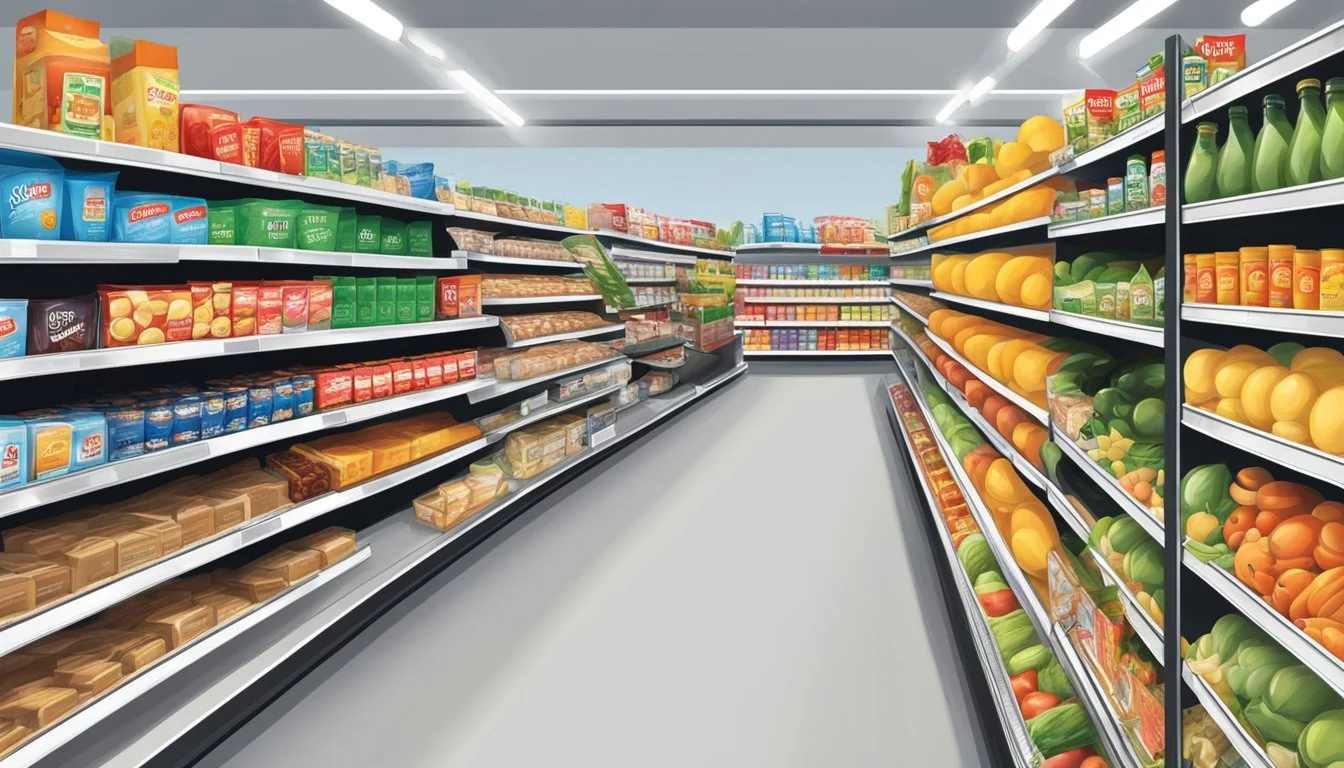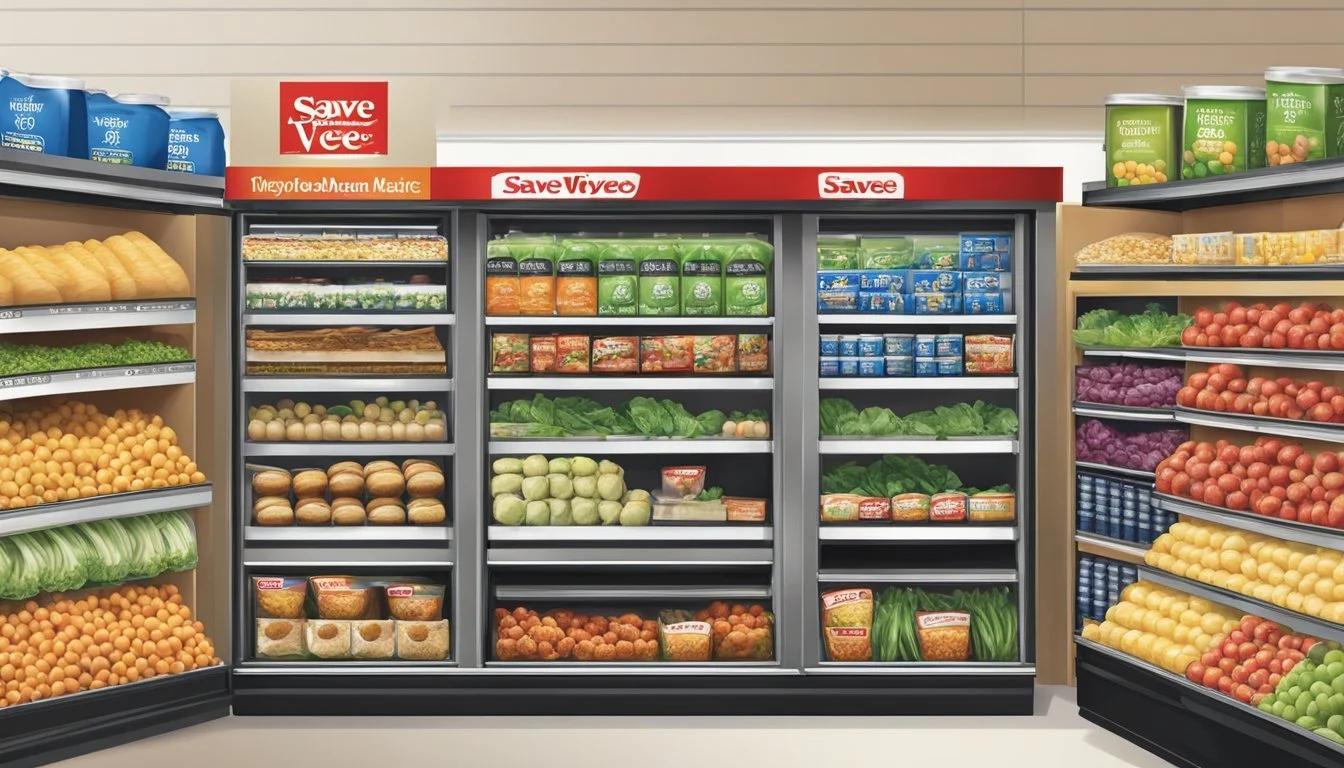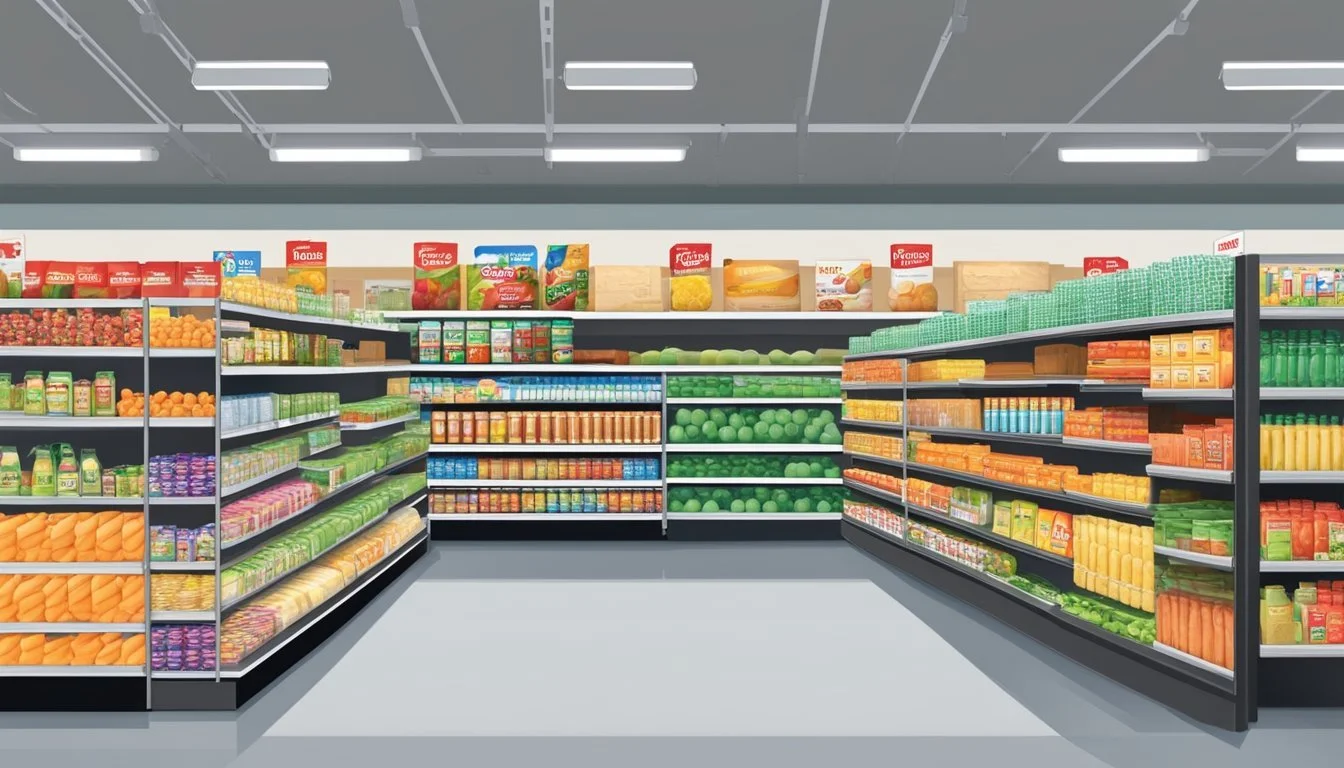Is Hy-Vee Cheaper Than Save Mart?
A Price Comparison Analysis
Grocery shopping can be a significant expense for many households, leading consumers to compare prices across different stores. Hy-Vee and Save Mart are two popular grocery chains that often come up in such comparisons.
While Hy-Vee generally offers high-quality products and excellent customer service, it tends to be more expensive than some of its competitors. Save Mart, on the other hand, is known for its competitive pricing strategy, often providing lower prices on many everyday items.
When comparing these two stores, it's important to consider factors beyond just price. Hy-Vee's focus on fresh produce and store cleanliness may justify higher prices for some shoppers. However, for those primarily concerned with budget, Save Mart typically offers more affordable options across various product categories.
Comparing Hy-Vee and Save Mart Pricing Strategies
Hy-Vee and Save Mart employ distinct pricing strategies to attract customers. Hy-Vee focuses on competitive pricing while balancing cost and service. The chain often offers sales and discounts to match or beat competitors' prices.
Save Mart, on the other hand, typically maintains consistent everyday low prices. This approach aims to provide customers with reliable pricing without the need to wait for sales.
Both stores use loyalty programs to offer additional savings. Hy-Vee's Fuel Saver + Perks program and Save Mart's Digital Coupons provide exclusive deals and discounts to members.
Pricing surveys have shown that Hy-Vee's regular prices tend to be higher than some competitors. However, their frequent sales can make them more competitive during promotional periods.
Save Mart's pricing strategy relies less on promotional cycles. Their prices generally fall in the mid-range compared to other grocery chains.
Here's a simplified comparison of pricing strategies:
Strategy Hy-Vee Save Mart Regular Pricing Higher Mid-range Sales Frequency High Moderate Loyalty Program Fuel Saver + Perks Digital Coupons Price Consistency Variable More stable
Customers looking for the best deals at Hy-Vee should watch for sales and use their loyalty program. Those preferring consistent pricing might find Save Mart's approach more appealing.
Evaluating the Quality of Products
Product quality is a key factor when comparing Hy-Vee and Save Mart. Both stores offer a mix of national brands and their own store brands.
Hy-Vee is known for prioritizing quality, especially in their produce and meat departments. They often source local and organic options to meet customer demand for high-quality, fresh foods.
Save Mart also strives to provide quality products, with a focus on fresh produce and meats. Their store brands aim to match national brand quality at lower prices.
Organic options are available at both retailers. Hy-Vee typically offers a wider selection of organic produce and specialty items compared to Save Mart.
Store brand quality can vary between the two chains. Hy-Vee's private label products are generally well-regarded for their quality and value. Save Mart's store brands also offer good quality, though the selection may be more limited.
National brands stocked by both stores are comparable in quality. The difference lies more in the range of products offered rather than their quality.
Produce freshness and quality can fluctuate based on individual store management and local suppliers. Regular shoppers often develop preferences based on their experiences at specific locations.
Assessment of Produce Selection and Freshness
Hy-Vee stands out for its robust selection of fresh produce. The store offers a wide variety of fruits and vegetables, including organic options for health-conscious shoppers.
Hy-Vee's produce department is known for its quality and freshness. The store takes pride in sourcing local and seasonal items when possible.
Save Mart also provides a decent selection of fresh produce. However, their variety may be more limited compared to Hy-Vee, especially regarding organic and specialty items.
Both stores strive to maintain high standards of freshness. Hy-Vee often receives praise for its produce quality, while Save Mart's freshness can vary by location.
Hy-Vee typically offers a larger selection of pre-cut fruits and vegetables. This convenience factor appeals to busy shoppers looking for quick meal solutions.
In terms of meats, both stores provide fresh options. Hy-Vee usually has a more extensive selection, including specialty cuts and organic choices.
Save Mart's meat department, while smaller, still offers quality products. They focus on providing staple cuts at competitive prices.
Produce pricing at Hy-Vee tends to be fair, with regular sales and promotions. Save Mart often aims for lower everyday prices on common fruits and vegetables.
Store Brand Offering Analysis
Hy-Vee and Save Mart both offer store brand products to provide more affordable options for customers. Hy-Vee's private label offerings include their namesake Hy-Vee brand as well as other lines like Culinary Tours and Good Graces.
Save Mart carries store brands such as Sunny Select and Sunnyside Farms. These generic products typically cover staple items like canned goods, dairy, and household supplies.
Store brands allow both retailers to compete on price while maintaining profit margins. They often cost 15-30% less than national brand equivalents.
Quality can vary, but many store brands match or exceed name brands in taste tests. Consumer Reports found store brands tied or beat national brands in over half of comparisons.
Selection differs between the chains. Hy-Vee tends to have a wider array of private label products across more categories. Save Mart focuses its store brands on basic grocery staples.
Price comparisons between Hy-Vee and Save Mart store brands are difficult without direct data. Generally, store brand prices align closely with each retailer's overall pricing strategy.
Customers seeking the lowest prices should compare specific store brand items between Hy-Vee and Save Mart. Sales and promotions can significantly impact relative affordability.
Grocery Shopping Experience and Services
Hy-Vee and Save Mart offer distinct shopping experiences. Hy-Vee stores are known for their wide aisles and well-organized layouts, making navigation easy for customers.
Save Mart typically provides a more compact store design, which can be efficient for quick trips. Both chains prioritize cleanliness and stock a variety of products to meet diverse customer needs.
Hy-Vee stands out with its in-store dining options, including restaurants and food courts in many locations. Save Mart focuses more on traditional grocery offerings but often includes deli and bakery sections.
Services comparison:
Self-checkout: Available at both chains
Grocery delivery: Offered by Hy-Vee and Save Mart
Curbside pickup: Available at select locations for both retailers
Pharmacy: Present in most Hy-Vee stores, less common in Save Mart
Hy-Vee emphasizes customer service with dedicated staff in various departments. Save Mart maintains a more streamlined approach, focusing on efficient checkout processes.
Both chains have loyalty programs, but Hy-Vee's Fuel Saver + Perks program is particularly popular for its gas discounts. Save Mart's rewards program offers digital coupons and personalized deals.
Hy-Vee has embraced technology with a user-friendly mobile app for shopping and managing prescriptions. Save Mart also offers a mobile app, though it may have fewer features compared to Hy-Vee's.
Loyalty Programs and Customer Savings
Hy-Vee offers a popular loyalty program called Fuel Saver + Perks. This program allows customers to save money on gas purchases and earn discounts on groceries.
Members can track their savings through the Hy-Vee app, which displays potential fuel discounts and provides easy ways to save both online and in-store.
Hy-Vee's program continues to grow steadily. The company regularly improves the member experience with upgrades like allowing customers to scan their fuel savers directly from the app.
For those seeking even more benefits, Hy-Vee offers a premium membership called PERKS Plus. This $99 annual membership can provide over $2,000 in discounts and deals each year.
PERKS Plus benefits include:
Extra fuel savings on every shopping trip
Exclusive monthly deals
Free delivery and express pickup from Hy-Vee
Save Mart also has a loyalty program, but specific details were not available in the provided search results. Customers interested in comparing the two should check Save Mart's current offerings.
Both stores likely use their loyalty programs to build a dedicated customer base while providing budget-friendly options for shoppers. These programs can significantly impact overall savings for regular customers.
Market Basket Analysis for Cost Comparison
Market basket analysis provides valuable insights into price differences between grocery stores. This method involves comparing the total cost of a fixed set of common items across retailers.
A typical market basket may include 150-200 products spanning various categories like produce, dairy, meat, and pantry staples. Analysts calculate the total basket cost at each store to determine relative affordability.
Some key items often included in grocery price comparisons:
Milk (price per gallon)
Eggs (price per dozen)
Bread (price per loaf)
Bananas (price per pound)
Ground beef (price per pound)
Chicken breast (price per pound)
Price per unit is crucial for accurate comparisons, especially for items sold by weight. This allows for standardized evaluation across different package sizes and formats.
Costco's bulk pricing model can complicate direct comparisons. Analysts may need to adjust for package size differences or focus on per-unit pricing.
A comprehensive market basket analysis considers both national brands and store-brand alternatives. Store brands often provide significant savings, impacting overall basket costs.
Seasonal factors and regional variations can influence results. Repeated analyses over time provide a more complete picture of pricing trends between competitors.
Consumer Behavior and Brand Perception Studies
Consumer behavior and brand perception studies play a crucial role in understanding how shoppers view different retailers. These studies examine factors that influence purchasing decisions and brand loyalty.
Researchers use various methods to gather data on consumer preferences and perceptions. These may include surveys, focus groups, and analysis of purchasing patterns.
One key aspect of these studies is comparing consumer perceptions of different retailers. For example, researchers might investigate how consumers view Hy-Vee compared to Save Mart in terms of pricing, quality, and overall value.
Brand perception studies often utilize ratings tables to quantify consumer opinions. These tables can highlight strengths and weaknesses of each retailer across multiple categories.
Consumer behavior research also examines how factors like store layout, product selection, and customer service impact shopping choices. This information helps retailers tailor their strategies to meet consumer needs.
The Consumerpedia podcast is a valuable resource for those interested in consumer behavior trends. It features discussions with experts and provides insights into the latest research findings.
By understanding consumer perceptions, retailers like Hy-Vee and Save Mart can make informed decisions about pricing, marketing, and store operations. This knowledge allows them to better compete in the marketplace and satisfy customer expectations.
Overview of Grocery Industry Competitors
The grocery industry in the U.S. is highly competitive, with numerous players vying for market share. Walmart stands out as a major competitor, known for consistently low prices across its extensive network of stores.
Target and Fresh Thyme also offer competitive pricing, with both averaging about 11% lower than typical area stores. This can translate to significant savings for consumers who shop regularly.
Other notable competitors include:
Aldi: Budget-friendly option with a focus on private label products
Whole Foods: Specializes in organic and natural foods
Trader Joe's: Known for unique products and friendly atmosphere
Kroger: Large nationwide chain with a wide product range
Albertsons: Operates multiple store brands across the country
Wegmans: Emphasizes customer service and product quality
Regional players like H-E-B in Texas and Meijer in the Midwest also command strong loyalty in their respective markets.
Amazon has disrupted the industry with its online grocery offerings and acquisition of Whole Foods. This has pushed traditional grocers to improve their e-commerce capabilities.
Discount chains like Lidl and variety in store formats, such as convenience stores and dollar formats, add further complexity to the competitive landscape.
Promotional Strategies and Impact on Customer Costs
Hy-Vee and Save Mart employ various promotional strategies to attract customers and reduce their grocery bills. Both chains utilize weekly ads featuring discounted items and special deals.
Hy-Vee offers a "Fuel Saver + Perks" program, allowing customers to earn points on purchases that can be redeemed for fuel discounts. This program can result in significant savings for families who frequently fill up their vehicles.
Save Mart implements a digital coupon system, enabling shoppers to clip coupons online and apply them automatically at checkout. This strategy simplifies the savings process for tech-savvy customers.
Both stores use loss leaders - products sold at or below cost to draw customers in. These often include staple items like milk, eggs, or bread. Families can benefit from strategically planning their shopping around these deeply discounted items.
Hy-Vee's "Mealtime To Go" program offers prepared meals at competitive prices, potentially saving families time and money compared to dining out. Save Mart counters with its own ready-to-eat options at budget-friendly prices.
Loyalty programs at both chains provide additional savings opportunities. Members often receive exclusive discounts and personalized offers based on their shopping habits.
Seasonal promotions and holiday-specific deals are common at Hy-Vee and Save Mart. These events can provide substantial savings on festive items and popular seasonal products.
Both retailers occasionally offer bulk discounts, benefiting larger families or those who prefer to stock up. However, shoppers should be cautious of undersized items sometimes used in promotions, which may appear cheaper but offer less value.
Product and Pricing Statistics from Surveys
Recent pricing surveys have shed light on how Hy-Vee compares to other grocery chains, including Save Mart. These studies analyzed costs of common items across multiple stores.
One survey found Hy-Vee prices averaged 5-10% higher than the all-store average in surveyed regions. Save Mart's prices were closer to the median, typically within 2-3% of the average.
Another study focused on a basket of 30 staple items, including milk, bread, and eggs. Results showed:
Store Avg. Basket Price Hy-Vee $89.50 Save Mart $84.75
This represents a difference of about 5.6% for these specific products.
A separate analysis of produce prices revealed more variation. Hy-Vee offered competitive rates on organic fruits and vegetables, often matching or beating Save Mart's prices in this category.
Surveys also indicated that Hy-Vee's private label products were priced similarly to national brands at Save Mart. This suggests potential savings for customers who opt for store brands at Hy-Vee.
It's important to note that prices can fluctuate based on location, season, and ongoing promotions. These statistics provide a general comparison but may not reflect exact prices at every store.
Price Composition Breakdown per Store
Hy-Vee and Save Mart offer different pricing structures for common grocery items. The price composition of staples like rice, bread, and milk can vary between these stores.
Hy-Vee typically prices its rice brands competitively. A 5-pound bag of long-grain white rice may cost around $3.99 to $4.99, depending on the brand.
Bread prices at Hy-Vee range from $1.99 for store-brand loaves to $3.99 for premium varieties. Milk prices fluctuate but generally fall between $2.49 to $3.99 per gallon.
Save Mart's pricing on rice is often similar to Hy-Vee's, with 5-pound bags priced between $3.79 and $5.29. Their bread selection starts at $1.89 for basic loaves and reaches $4.29 for artisanal options.
Milk at Save Mart is competitively priced, typically ranging from $2.59 to $3.89 per gallon. Both stores frequently offer sale prices on these staple items, which can significantly impact the final cost to consumers.
Item Hy-Vee Price Range Save Mart Price Range Rice $3.99 - $4.99 $3.79 - $5.29 Bread $1.99 - $3.99 $1.89 - $4.29 Milk $2.49 - $3.99 $2.59 - $3.89
These price ranges represent typical costs and may vary based on location, brand, and current promotions.














